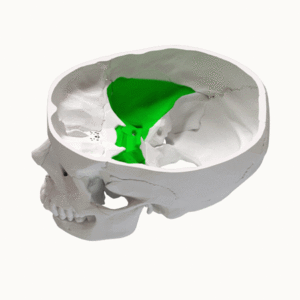The temporal lobe is one of the four main lobes or regions of the cerebral cortex. It is located in the largest division of the brain known as the forebrain (prosencephalon). As with the frontal, occipital, and parietal lobes, there is one temporal lobe located in each brain hemisphere.
 |
| Temporal Lobe |
This vital structure helps process sensory input, including pain and auditory stimuli. It also helps you understand language, retain visual memories, and both process and remember emotions.
Damage to this region of the brain can have global consequences for virtually every bodily function, since much of what we do depends on emotions and sensory input.
- The temporal lobe interacts with and depends upon input from all other brain regions, as well as sensory input about the surrounding world.
- Rather than controlling the mind, it learns from the environment, creating a complex mind-body-environment interplay that constantly changes a person's subjective experiences. Though every temporal lobe has a similar structure, the experiences produced in each person's temporal lobe are uniquely their own.
Gross anatomy
 |
| Temporal lobe |
- The temporal lobe is the second largest lobe, after the larger frontal lobe, accounting 22% of the total neocortical volume .
- The lobe extends superiorly to the Sylvian fissure, and posteriorly to an imaginary line; the lateral parietotemporal line, which separates the temporal lobe from the inferior parietal lobule of the parietal lobe superiorly and the occipital lobe inferiorly.
- The middle cranial fossa forms its anterior and inferior boundaries.
The outer surface, is called the neocortex (referring to its relatively recent evolutionary history). The older cortex, sometimes referred to as limbic system, is found on the inside surface of the temporal lobe and includes the hippocampal gyrus, uncus, hippocampus, and amygdala.
Some of the most important areas of the Temporal lobe include
- Limbic System: see link
- Wernicke's area: This brain region is associated with the understanding and processing of speech.
- Broca's area: This brain region aids in the production of speech, though some evidence suggests that, when Broca's area is damaged, nearby regions may compensate. Together with Wernicke's area, Broca's area aids communication.
Function
 |
| Temporal lobe |
The Temporal Lobe mainly revolves around hearing and selective listening. It receives sensory information such as sounds and speech from the ears. It is also key to being able to comprehend, or understand meaningful speech. In fact, we would not be able to understand someone talking to us, if it wasn’t for the temporal lobe. This lobe is special because it makes sense of the all the different sounds and pitches (different types of sound) being transmitted from the sensory receptors of the ears.
Damage
The effects of temporal lobe damage are many and include:
- Temporal lobe epilepsy: The most common form of epilepsy, and the most common cause of seizures, temporal lobe epilepsy produces uncontrolled electrical activity in the brain that can lead to seizures.
- Various forms of aphasia, a disorder of speech and language.
- Impaired memory skills.
- Changes in personality, particularly regarding emotional regulation and interpersonal interactions.
- Changes in self-image and self-perception: Because the temporal lobe houses many of our memories, disruptions in or loss of autobiographical memory can produce personality changes, as well as changes in a person's sense of self.
- Changes in automatic behaviors, such as hunger, thirst, appetite, and sexual desire.
- Changes in executive function. Some people with temporal lobe damage struggle to plan or coordinate their actions.
- Changes in spatial navigation and spatial reasoning. Damage to the frontal lobe impedes memory, and spatial reasoning (including driving) is heavily dependent on memory. Thus some people with temporal lobe damage may experience challenges driving, paying attention to physical directions, or navigating their way around the world.

0Comments